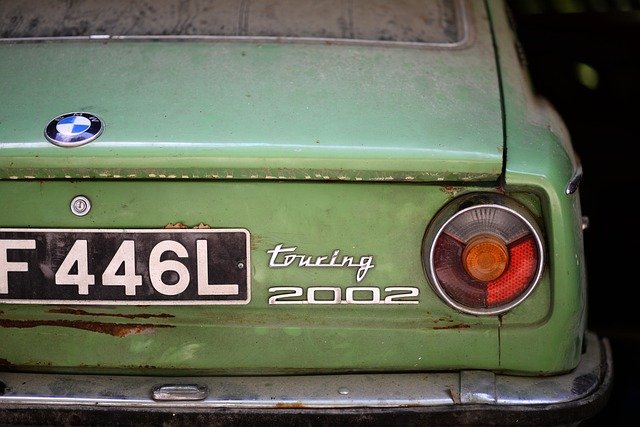The Evolution and Appeal of Classic Pickup Trucks
Classic pickup trucks have long captured the hearts of automotive enthusiasts and collectors alike. These rugged vehicles, initially designed for utility, have become icons of American culture and engineering. This article explores the rich history, defining features, and enduring appeal of classic pickup trucks, as well as the vibrant community surrounding them and the importance of their preservation.

How did classic pickup trucks evolve through history?
The history of classic pickup trucks is deeply intertwined with the development of the American automotive industry. In the early 20th century, farmers and tradespeople began modifying passenger vehicles to create makeshift cargo carriers. Recognizing this demand, automobile manufacturers started producing purpose-built trucks in the 1920s.
Ford’s Model T Runabout with Pickup Body, introduced in 1925, is often considered the first factory-produced pickup truck. Throughout the following decades, manufacturers like Chevrolet, Dodge, and International Harvester joined the market, each contributing to the evolution of pickup truck design and functionality.
The post-World War II era saw a significant boom in pickup truck popularity. As America’s economy flourished, these vehicles became not just work tools but also family vehicles. The 1950s and 1960s brought about iconic models like the Ford F-Series, Chevrolet C/K Series, and Dodge Power Wagon, which continue to be highly sought after by collectors today.
What are the defining features of classic pickup trucks?
Classic pickup trucks are characterized by several distinctive features that set them apart from their modern counterparts. One of the most noticeable is their simple, utilitarian design. Early models featured a separate cab and bed, often with a flat, upright grille and round headlights.
The interiors of classic pickups were typically spartan, focusing on functionality rather than luxury. Bench seats, manual transmissions, and basic instrumentation were common. Under the hood, these trucks often housed powerful V6 or V8 engines, designed to provide the torque necessary for hauling and towing.
Another defining feature is the use of sturdy body-on-frame construction, which provided durability and ease of repair. Many classic pickups also featured rear-wheel drive, solid axles, and leaf spring suspensions, contributing to their rugged capabilities and distinctive ride characteristics.
Why do collectors appreciate classic pickup trucks?
Collectors are drawn to classic pickup trucks for various reasons. Nostalgia plays a significant role, as these vehicles often evoke memories of a simpler time or represent a connection to family history. Many collectors appreciate the straightforward mechanics of older trucks, which are often easier to work on and maintain compared to modern vehicles.
The aesthetic appeal of classic pickups is another major factor. Their timeless designs, characterized by clean lines and distinctive styling cues, continue to captivate enthusiasts. Limited production numbers of certain models or special editions also contribute to their collectibility and potential investment value.
Moreover, classic pickup trucks offer versatility that appeals to collectors. They can be restored to original specifications, customized into hot rods, or maintained as daily drivers, allowing owners to express their personal style and automotive preferences.
How does the community around classic pickup trucks function?
The classic pickup truck community is a vibrant and supportive network of enthusiasts, restorers, and collectors. This community often comes together through car shows, swap meets, and online forums, sharing knowledge, parts, and passion for these vintage vehicles.
Local and national clubs dedicated to specific makes or models provide opportunities for owners to connect, showcase their trucks, and participate in events. These organizations often play a crucial role in preserving the history and legacy of classic pickup trucks.
The community also supports a thriving aftermarket industry, providing reproduction parts, restoration services, and customization options. This ecosystem not only helps maintain existing classic trucks but also enables the continued enjoyment and preservation of these vehicles for future generations.
What are the key aspects of maintaining and preserving classic pickup trucks?
Maintaining and preserving classic pickup trucks requires dedication, knowledge, and often significant investment. Regular maintenance is crucial, including oil changes, lubrication of moving parts, and careful attention to cooling systems and brakes.
Rust prevention and treatment are particularly important for classic trucks, especially those in regions with harsh winters or high humidity. Proper storage, ideally in a climate-controlled environment, can help protect these vehicles from the elements and prevent deterioration.
Restoration is a common aspect of classic pickup truck ownership. This process can range from minor cosmetic updates to complete frame-off restorations. Authenticity is often prized in the collector community, so using period-correct parts and materials is important for those seeking to maintain a truck’s historical integrity.
Documentation plays a crucial role in preserving the history and value of classic pickup trucks. Maintaining records of the vehicle’s provenance, restoration work, and maintenance can significantly enhance its appeal to future collectors and enthusiasts.
The enduring appeal of classic pickup trucks lies in their blend of utility, simplicity, and timeless design. From their humble beginnings as workhorses to their current status as prized collectibles, these vehicles continue to captivate automotive enthusiasts. Whether admired for their historical significance, mechanical simplicity, or aesthetic charm, classic pickup trucks remain an important part of automotive heritage, kept alive by a passionate community dedicated to their preservation and enjoyment.




